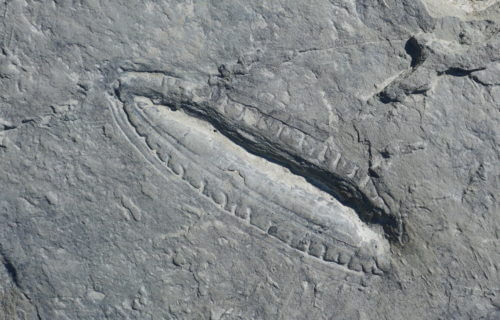CANBERRA, Australia — The world’s oldest meal — dating back more than 550 million years — has been unearthed in Russia.
Researchers from Australia say it consisted of bacteria and algae, providing new insights into how our earliest animal ancestors survived. Dickinsonia reached five feet long and had a rib-like design imprinted on its body. It had no eyes, mouth, or gut and resembled a jellyfish. The odd creature belonged to a group known as Ediacaran biota. It absorbed food through its body as it traversed the ocean floor.
“Our findings suggest that the animals of the Ediacara biota, which lived on Earth prior to the ‘Cambrian Explosion’ of modern animal life, were a mixed bag of outright weirdos, such as Dickinsonia, and more advanced animals like Kimberella that already had some physiological properties similar to humans and other present-day animals,” says lead author Dr. Ilya Bobrovskiy from GFZ-Potsdam in a media release.
They appeared around 600 million years ago and flourished for tens of millions of years before an event called the “Cambrian explosion.” This massive diversification of life occurred around 541 million years ago, as most of the major animal groups appear in the fossil record.
The Ediacaran species largely disappeared. They straddle an ancient eon when the Earth was dominated by bacteria and a later age of dominance by animals. Dickinsonia and Kimberalla have a structure and symmetry unlike anything that exists today.
“Ediacara biota really are the oldest fossils large enough to be visible with your naked eyes, and they are the origin of us and all animals that exist today. These creatures are our deepest visible roots,” adds Dr. Bobrovskiy, who completed the work as part of his PhD at The Australian National University (ANU).
These ancient meals may have been highly nutritious
Algae are rich in energy and nutrients. They may have been instrumental for Kimberella’s growth.
“The energy-rich food may explain why the organisms of the Ediacara biota were so large. Nearly all fossils that came before the Ediacara biota were single-celled and microscopic in size,” says co-author Professor Jochen Brocks of ANU.
The international team dug up fossils of both species from steep cliffs near the White Sea, a remote part of the world and home to bears and mosquitoes. Using advanced scanners, they were able to extract and analyze cholesterol contained in the tissue. These fats are a hallmark of animal life.
The molecules contained tell-tale signatures that showed what the animals ate in the lead up to their death. They were entombed in their guts, along with the algal and bacterial remains. Differentiating them was a challenge.
“Scientists already knew Kimberella left feeding marks by scraping off algae covering the sea floor, which suggested the animal had a gut. But it was only after analyzing the molecules of Kimberella’s gut that we were able to determine what exactly it was eating and how it digested food,” Prof. Brocks continues.
“Kimberella knew exactly which sterols were good for it and had an advanced fine-tuned gut to filter out all the rest.”
“This was a Eureka moment for us; by using preserved chemical in the fossils, we can now make gut contents of animals visible even if the gut has since long decayed. We then used this same technique on weirder fossils like Dickinsonia to figure out how it was feeding and discovered that Dickinsonia did not have a gut,” the researcher concludes.
The new study may finally end an evolutionary mystery
The biota have been difficult to classify ever since they were first discovered more than 75 years ago in the Ediacara Hills of South Australia — hence their name. Their position on the tree of life has been one of the greatest mysteries in paleontology. They have been described as lichens, fungi, protozoans, evolutionary dead-ends, and even an intermediate stage between plants and animals.
The study, published in Current Biology, now places Dickinsonia and Kimberalla firmly within the animal kingdom.
South West News Service writer Mark Waghorn contributed to this report.

